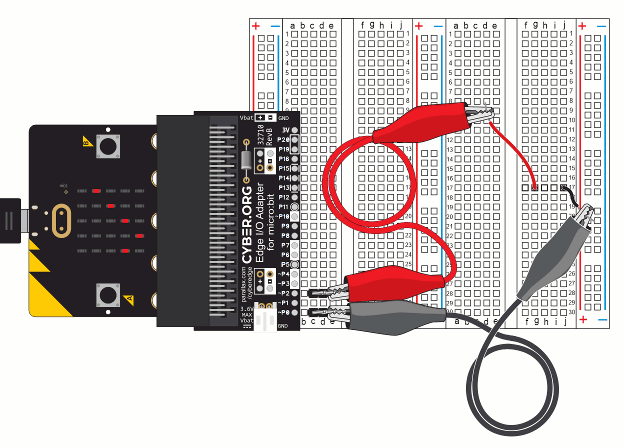Let’s test all the examples from How to Connect Two Wires.
- Use the animation and the instructions below it to connect your micro:bit to the breadboard with the Edge I/O Adapter for micro:bit.
- Optionally, view the full-size continuity-measurements.mp4 clip to play and pause it between steps.
- Verify that the micro:bit displays a checkmark to indicate that the two sockets being probed are connected, or the NO (circle with slash) symbol to indicate that the sockets are not connected.

Did You Know?
- Continuity tests should ONLY be performed while power is not applied to the circuit.
- A continuity tester is a device to measure if there is electrical continuity between two points. In other words, a device that tells if current can flow between points where the tester’s probes are connected.
- Electric current is the flow of electrons that makes lights glow and motors turn.
- An electrical connection is one that can conduct electric current.
- Common electric conductors are metals like silver, gold, copper, tin, nickel, and lead.
- Electric insulation prevents the flow of electric current. Common insulators include materials like air, plastic, and fiberglass.
- Terminal strips are normally used for connecting electrical and electronic part leads together to build a circuit. Bus strips are normally used for keeping power connections close to each row of 5 sockets in the terminal strips. Since most circuits need some kind of power supply, having power sockets next to each row will make circuits more organized.
- A breadboard is made of metal clips separated by plastic. The metal clips in each terminal strip row has five pairs of springy metal fingers. Each wire or part lead you plug into a breadboard socket is gripped by a pair of these metal fingers, which makes an electrical connection. Each bus strip column is 5 clips that are still connected to each other with metal at the base. They have not been cut apart like the row strips have.

- A jumper wire is a metal wire conductor that is wrapped in an insulating plastic sheath.

